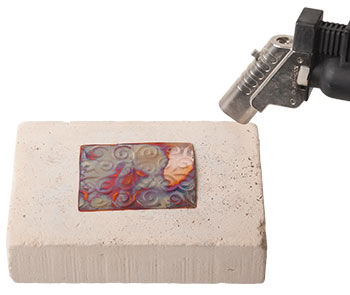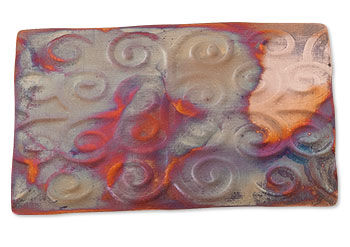Annealing Metal
Instructions
Metal has the ability to be either rigid (also known as hard or full-hard) or malleable (also known as soft, dead-soft or fully annealed). In this article, metal refers to the non-ferrous (not containing iron) metals used in jewelry-making--gold, sterling silver, sterling-silver filled, copper, brass, bronze and nickel. There are levels of stiffness between dead-soft and full-hard; this can be controlled to suit your design needs.
Annealing is the controlled heating process that changes the molecular structure of metal and makes it more malleable or brings the metal to dead-soft. The benefit to annealing metal is changing the workability if the metal is too "hard" to work with or if it has become overworked or work hardened (also called brittle) to the point where it might break. Annealing will help to set things back to soft so you can keep on working.
Hardening begins from the point of cooling and increases with each twist, tap or tumble. Each metal has different tolerances and each design dictates what works best for that design. Usually a design is easier to create in the dead-soft to half-hard state and will wear better when full-hard.

Place the metal to be annealed onto the fire block. Dim the lights in your studio. Ignite the torch then begin to heat the metal.
Heat the metal to around 1100- to 1150-degrees Fahrenheit.
A few color indicators to look for: sterling and copper are annealed when they reach a dull red; brass until it glows true red.
Note: If you go too far, the metal will turn cherry red and soon after melt.
Once you reach the proper color, the metal is fully annealed. Allow the red glow of sterling silver and copper to fade, then quench in a container of water. Allow an extra minute for brass to fade, then quench in water.
Note: If left to cool to room temperature rather than quenching, most metals will have a heightened level of hardness right from the start.
Tip: Add a line to your metal using a Sharpie marker. Heat the metal and once the line has disappeared from the heat, the metal is annealed.
Have a question regarding this project? Email Customer Service.
Copyright Permissions
All works of authorship (articles, videos, tutorials and other creative works) are from the Fire Mountain Gems and Beads® Collection, and permission to copy is granted for non-commercial educational purposes only. All other reproduction requires written permission. For more information, please email copyrightpermission@firemtn.com.
